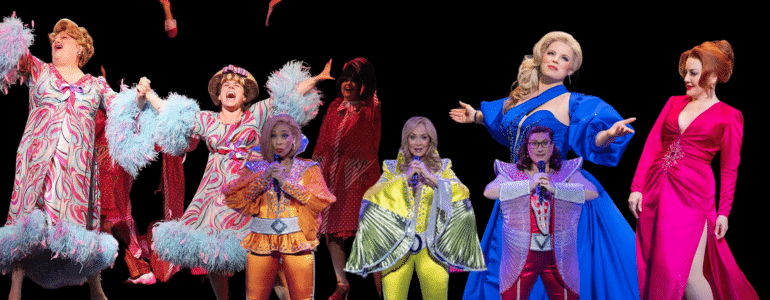Is The Regional Theater Crisis Broadway’s Too? So What Do We Do?
In recent weeks, regional theaters sounded the alarm about the state of their stages.
One of the most dramatic was the shutdown of the Mark Taper Forum’s season by CTG in Los Angeles.
And then there was this article in the NY Times that used the word crisis in the headline.
The summary?
Regional theater audiences have not returned to their pre-pandemic levels. And they might never return.
Oh, and then there is post-pandemic inflation.
It doesn’t take a PhD in economics to do this calculation:
Fewer tickets sold + higher expenses = TROUBLE! Right here in every regional theater city.
But here’s what dawned on me.
As I reported a few weeks ago, Broadway’s recovery is going . . . fine. We’ve got 83% of our audience back and 86% of our gross from 2019.
Of course, like regional theaters, our expenses are about 10-20% higher.
So, similar problem – fewer people and higher expenses.
But the similarities don’t stop there.
When I talk to everyone in-the-know from the marketing agencies to the theater owners, the conclusion about the missing audience is the same.
The bulk of it is the suburban ticket buyer.
It’s not the tourists. They are packing the streets and spending money like never before.
We’re missing our locals. The Midtown office workers who aren’t seeing shows on Thursday or Friday nights. The Jersey or Long Island residents who now come into the city once a quarter instead of once a month.
That’s the problem that has flatlined our recovery.
What does that have to do with the regional theater crisis?
IT’S THE SAME PROBLEM!
(Sorry to shout, but it was both a Eureka moment and a frustrating one at the same time.)
See, for the suburban audiences around New York City? Broadway IS their regional theater. They live within an hour’s commute. This is where they would usually go to see the best that theater has to offer.
Their crisis is ours. Locals who have gotten out of the habit.
It makes sense. Why would our theater audiences be any different?
So what are we going to do about it?
First, we need to invest in the next audience. Older audiences may be out of the habit, and it may take too long to restore that habit (we were shut down too long to get them back fast). So we need to create a new habit with the next generation.
We do that in two ways.
-
Content is King
Younger audiences and new audiences will come when there is something to see. Yes, and when tickets are accessible and affordable, but that is NOT the most important thing.
78% of Taylor Swift fans are 18-34. They have no problem paying whatever price they need to pay for those Eras Tour tickets.
-
Participation is Even King-ier
When young people participate in the arts, they are much more likely to attend and support the arts later in life. Period. What can we do to get them involved in what we’re doing to start that theatergoing habit now?
These are two long-term strategies on how we invest in the theater’s future.
Here’s the bad news. This doesn’t happen overnight. The short term for both regional theaters and certain Broadway shows is going to be tough.
That’s why belts need to be tighter than ever . . . and we must be hyper-creative with the shows we’re putting on the stage.
A so-so experience isn’t enough for that missing audience to get off the couch.
Unique in presentation with unique economical models are going to be what gets us through, until the new generation of theatergoers arrives and restores us to where we were before.
Podcasting
Ken created one of the first Broadway podcasts, recording over 250 episodes over 7 years. It features interviews with A-listers in the theater about how they “made it”, including 2 Pulitzer Prize Winners, 7 Academy Award Winners and 76 Tony Award winners. Notable guests include Pasek & Paul, Kenny Leon, Lynn Ahrens and more.














